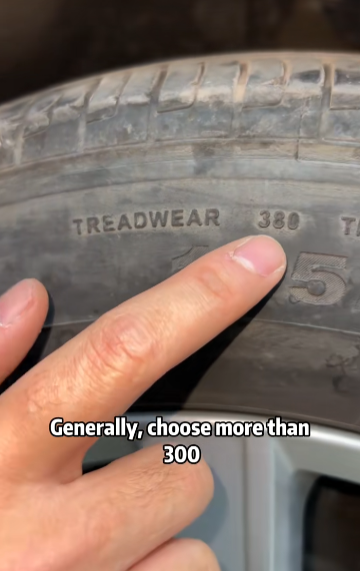
Car tires—round, black, and often taken for granted—are some of the most important parts of your vehicle. They may not have flashy features like your dashboard touchscreen or the latest hybrid engine, but they carry the weight of your car, affect your safety, and even influence fuel efficiency. You might be surprised to learn just how much goes into making a car tire and what secrets they hold beneath the rubber surface.
Let’s dive into the hidden world of car tires and explore some fascinating facts and tips every driver should know.
1. Tires Are More Than Just Rubber
At first glance, a tire looks like a simple rubber doughnut. But in reality, it’s a complex structure made from over 200 different materials. These include natural and synthetic rubber, steel, fabric, carbon black, silica, and various chemical compounds. The combination of these materials gives the tire its strength, flexibility, durability, and grip.
The most important parts of a tire include:
- Tread: The patterned part that touches the road, designed for traction.
- Sidewall: The side of the tire that protects the internal structure.
- Bead: A strong steel cable that helps the tire grip the rim.
- Carcass: The inner framework made of fibers that gives the tire its shape and strength.
2. Tread Patterns Are Scientifically Designed
Ever noticed the lines and grooves on your tire? These patterns aren’t just for looks—they’re carefully engineered to maximize performance depending on road conditions. There are several types of tread patterns:
- Symmetrical tread offers a smooth, quiet ride and is great for everyday use.
- Asymmetrical tread provides better handling and performance, especially on wet roads.
- Directional tread is designed to move water away quickly and prevent hydroplaning.
For snow and icy conditions, winter tires have deeper grooves and biting edges that dig into slippery surfaces. Meanwhile, racing tires may have very little tread to maximize road contact on dry tracks.

3. Air Pressure Matters More Than You Think
Tire pressure isn’t just about keeping your tires firm. It directly affects your car’s handling, braking, fuel efficiency, and tire lifespan. Underinflated tires create more resistance with the road, which uses more fuel and wears the tire out faster. Overinflated tires, on the other hand, reduce traction and can make your ride bumpy.
Most vehicles have a recommended tire pressure listed on a sticker inside the driver’s door. You should check your tire pressure at least once a month and before long trips. Investing in a good tire gauge—or even better, a digital one—can help you stay on top of this small but vital task.
4. Tires Communicate Through Wear
Tires wear down over time, but the way they wear can tell you a lot about what’s going on with your car. Here are a few common patterns:
- Center wear means the tire may be overinflated.
- Edge wear usually indicates underinflation.
- Cupping or scalloping might be caused by worn-out suspension parts.
- Feathering can result from poor wheel alignment.
By regularly checking your tires for wear patterns, you can catch problems early and potentially avoid more serious mechanical issues.
5. Rotating Tires Can Save You Money
Front tires tend to wear out faster than rear tires because they carry more weight and handle steering. That’s why rotating your tires every 5,000 to 8,000 miles (or as recommended by your vehicle’s manufacturer) helps them wear evenly and last longer.
There are several rotation patterns depending on your vehicle’s drive type (front-wheel, rear-wheel, all-wheel). Your mechanic can guide you, or you can find this information in your car’s manual. Keeping a tire rotation schedule can extend the life of your tires by thousands of miles.

6. There’s a Best Time to Buy Tires
Did you know that tire prices often drop during certain times of the year? The best months to buy tires are usually April and October. That’s because manufacturers and shops often run promotions in the spring and fall as people prepare for seasonal changes.
Shopping around, comparing prices, and looking for rebates or discounts can help you save a significant amount of money on your next set of tires.
7. Old Tires Can Be Dangerous—Even If They Look Fine
Tires age, even if you don’t drive often. Rubber breaks down over time, especially when exposed to heat, sunlight, or moisture. Most experts recommend replacing tires every 6 to 10 years, regardless of tread depth.
To check the age of your tire, look for the DOT code on the sidewall. The last four digits tell you the week and year the tire was made. For example, “2919” means the tire was manufactured in the 29th week of 2019.
Driving on old tires increases your risk of blowouts and accidents, especially at high speeds.
8. Tire Choice Affects Fuel Economy
Want to save on gas? Choose fuel-efficient tires, also known as low rolling resistance tires. These tires are designed to reduce friction with the road, which means your engine doesn’t have to work as hard.
According to the U.S. Department of Energy, using fuel-efficient tires can improve gas mileage by up to 4%. That might not sound like much, but over the lifetime of the tire, it can save you hundreds of dollars.

9. Run-Flat Tires and TPMS Add Safety
Some modern cars come with run-flat tires that can be driven even after a puncture—for up to 50 miles at reduced speeds. While they’re more expensive, they can keep you from being stranded on the side of the road.
In addition, Tire Pressure Monitoring Systems (TPMS) are now standard in many vehicles. These systems alert you when one or more tires are dangerously underinflated, helping you avoid a possible blowout.
10. Recycled Tires Are Getting a Second Life
Each year, over a billion tires are discarded worldwide. But many of them are now being recycled into useful products, such as playground surfaces, artificial turf, roofing materials, and even fuel.
Some companies are also creating sustainable tires using renewable materials like dandelion rubber or soybean oil. As technology improves, the future of tires looks greener—and smarter—than ever before.

Final Thoughts
Car tires may not seem exciting, but they’re full of secrets that reveal how essential they are to your vehicle’s performance and your safety. Knowing how to care for your tires, what signs to watch for, and how to make informed choices can help you get the most out of every mile.
So the next time you glance down at your car’s tires, remember: they’re more than just circles of rubber—they’re high-tech, safety-critical, fuel-saving marvels that deserve your attention.



